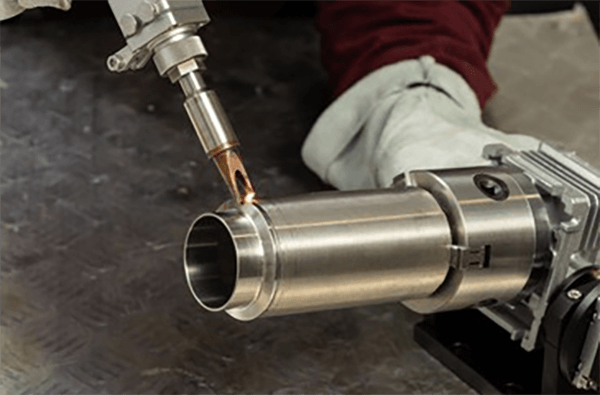
Delivering appointed top-layer smoothness for a manufactured item is critical.
- Technical drawings lay out precise surface criteria for components
- Engineers often specify Ra (average roughness) to numerically define surface irregularity
- Comprehending finish specifications is crucial to meet operational standards
- A well-defined surface finish can impact factors such as lubrication, friction, and durability
- Right interpretation of surface notes ensures attainment of the sought condition
CNC Machining: Precision Engineering Defined

CNC machining is a transformative approach within manufacturing employing digital instructions the machinery forms elaborate parts with exactness.
- CNC equipment supports building precise items from many material classes
- Broad CNC applicability benefits industries like aerospace, automotive, and healthcare
- CNC machining delivers exceptional repeatability ensuring identical parts across production runs
Across development to broad production CNC machining contributes fundamentally to manufacturing innovation
CNC Specification Guidance
Reading machine specs may appear overwhelming initially
In contrast, measured learning and order help you traverse technical specifications
Commence with recognizing main metrics: spindle rpm, feed, precision, work volume, control system
Every spec plays a role in determining machine performance.
Consider that higher spindle velocity suits pliant materials while elevated feed boosts capacity.
Comprehending those interactions assists in picking the proper CNC for tasks
Don’t forget to review maker-supplied manuals carefully.
Maker resources usually present informative direction and demystify jargon
What is a CNC Machine? A Comprehensive Guide
CNC systems refer to programmed machine tools for accurate automated part production across materials These systems execute G-code sequences to govern tool movement and actuation.
- Common CNC classes include milling machines, turning lathes, routing systems, plasma cutters
- Production processes accommodate metal alloys, plastics, woods, and composite materials
- Plus CNC technology provides rapid prototype cycles and limited manufacturing for small firms and research units
Understanding CNC Machinery
CNC machines represent a remarkable fusion of mechanical precision and sophisticated software control Programmable machines execute software-driven fabrication of straightforward components and complex constructions The core idea is converting digital blueprints into tangible parts.
- CNC machining
- Digital design integration
This process involves a series of precise movements guided by the computer program Engineers contribute by setting machining variables, overseeing runs, and assuring product standards.
The Role of Surface Finish in CNC Machining
Delivering planned surface condition during machining is necessary It impacts both functional performance and surface look Stock properties, cutting settings, and finishing operations determine surface result.
Smoother surfaces elevate durability while coarser textures may impair utility CNC machining processes offer a wide range of tools and techniques to achieve the specific surface finish for different applications.
- Such as employing varied cutter geometries |tool materials|surface speed choices to reach texture
- Furthermore secondary operations such as polishing, grinding, or sanding enhance finish
Grasping how machining variables affect texture is critical to obtain optimal outcomes.
CNC Overview: From Use to Application
Programmed machining provides accurate part shaping across multiple material types They process digital commands to produce elaborate components repeatedly Grasping G-code, tool selection, and machine operation underpins successful manufacture
Use cases cover aerospace, automotive, medical, electronics, and more sectors From precision engine parts to detailed injection molds, CNC delivers complex products
How to Specify Surface Finish for CNC Parts
Appropriate surface specification is essential during CNC part production It assures alignment with required performance and visual expectations Callouts commonly use the roughness average (Ra) system to denote surface finish Reported in µm or inches, the metric indicates average irregularity magnitude.
Balance smoothness needs with intended application when designating finish

Typically smoother finishes are chosen where tight dimensional control and alignment matter
More pronounced surface profiles help applications relying on friction or traction
Include unambiguous roughness values in drawings to specify finish demands Record Ra alongside additional machining recommendations or surface treatments.
Note that precise surface specifications contribute directly to production success
Categories of CNC Machines and What They Do
The CNC ecosystem includes a broad selection of machines for multiple task categories They integrate CAD-driven toolpaths to guide cutters for precise component production.
- Drills bore precise holes with controlled feed and speed
- Routers handle flat panel cutting and profiling for non-metal workpieces
- Beam and jet cutting methods enable accurate slicing with differing thermal impacts
Select machinery by weighing material, complexity, and tolerance needs Machine-specific strengths enable applications in fields ranging from aerospace to automotive engineering.
Achieving Optimal Surface Finish with CNC Machining
Achieving a superior surface finish is crucial in numerous manufacturing processes and CNC machining offers an exceptional method for achieving this goal By adjusting feed, rpm, and cutter geometry skilled staff shape chip flow and surface formation for better finishes Moreover premium cutters and correct coolant application enhance surface outcomes Optimized cutting plans and meticulous setup procedures help achieve premium finishing.
Surface Finish Considerations in CNC Programming
Managing finish via CNC code is important to secure required surface properties Cutting parameter selection—feed, speed, tool geometry—controls surface finish Conscientious parameter tuning with sound coolant strategy produces excellent surface quality.
- Plus regular inspection and maintenance of tools copyright finishing standards Continuous tool maintenance and oversight preserve high finish consistency Also ongoing tool care and inspection what is cnc support sustained finish reliability
- For better finishes evaluate substrate, roughness goal, and functional context
- Toolpath simulation enables testing parameter impacts to cut down surface errors
- Plus regular inspection and maintenance of tools copyright finishing standards
